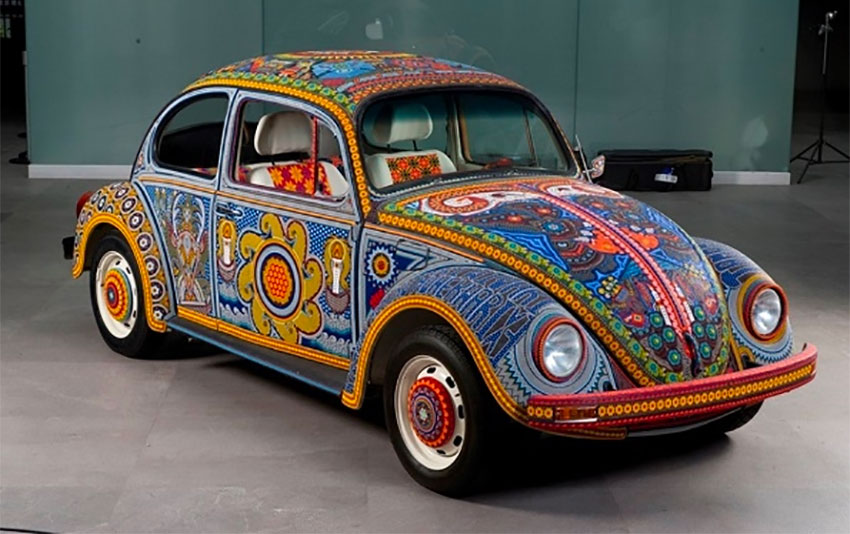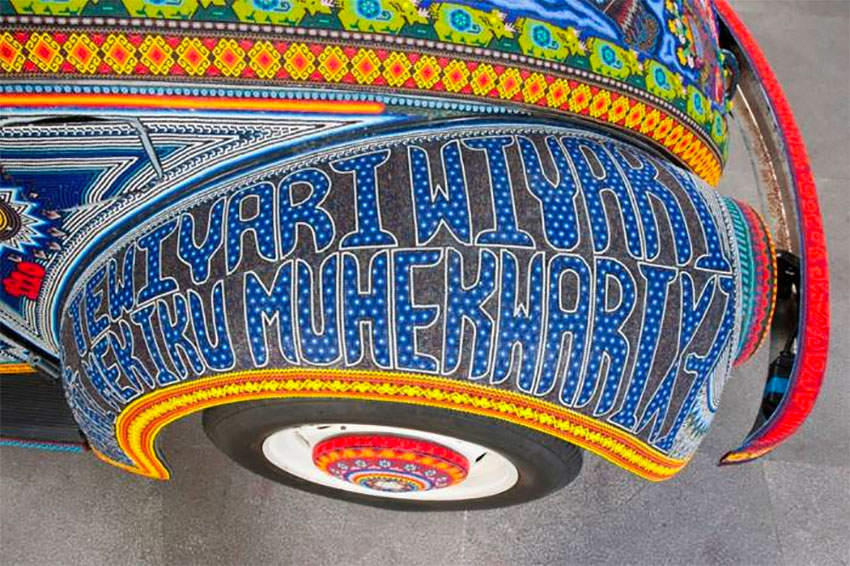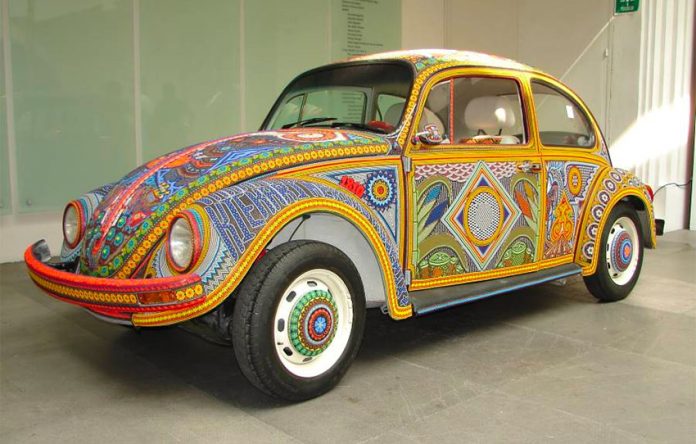How can the mexicanidad — Mexicanness — of a car made in Mexico but designed in Germany be increased? By covering it in Mexican indigenous art, of course.
The Volkswagen beetle was designed and first made in Germany but is nevertheless considered a Mexican icon because millions of the vehicles were made at the automaker’s Puebla factory until production ceased last year.
Nine years before the last Beetle rolled off the production line, a group of eight Wixáritari, or Huichol, artisans from two families worked painstakingly for eight months to cover the exterior of a 1990 vocho, as the car is known in Mexico, with more than 2 million colorful glass beads and thus create a unique piece of vehicular art.
After thousands of hours of work the vochol – a portmanteau of the words vocho and Huichol – was born.
The more than 2 million beads, approximately 2,277,000 to be more precise, together depict geometric patterns as well as animals and other aspects of the natural world.

They include snakes on the hood and deer, scorpions, birds and peyote flowers on the car’s sides. All are considered important symbols in Huichol culture and spirituality.
There is also a sun on the roof, which symbolizes the union between humans and gods, and four two-headed eagles that offer protection to the vehicle’s passengers. On the vochol’s rear is an image of shaman steering a canoe.
The phrases “200 years of independence” and “100 years since the Mexican Revolution” appear in the Huichol language on the fenders of the vochol, whose creation was sponsored by several public and private organizations including the Jalisco Ministry of Culture and the Nayarit Culture and Art Council.
The Huichol people are native to and continue to live in those two states as well as parts of Zacatecas and Durango.
Parts of the interior of the vochol including the seats and steering wheel are also covered in the intricate beadwork for which the indigenous people are well known.
The bead-adorned Beetle is perhaps the largest piece of Huichol beadwork art ever produced. It was first put on display at a museum in Guadalajara before being exhibited in numerous countries around the world.

When it is not on loan, the vochol can be admired at the Museum of Popular Art in Mexico City’s historic center.
Source: Puros Autos (sp)
